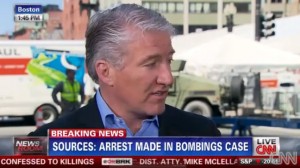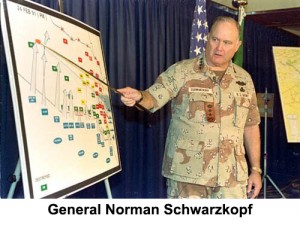The events of last Monday at the Boston Marathon were horrific, tragic, and heart-rending. Minute-by-minute coverage of the aftermath of the two explosions—witnessed live on all broadcast and cable networks—provided testament to the value of electronic media when this kind of event occurs, such as the 9/11 attacks of 12 years ago.
On the other hand, the reporting, especially by the electronic media, also revealed the vulnerable underbelly of reporting in today’s media environment. And that is the ever-present competitiveness among the news media to get the scoop, and to get it first, even if the facts reported are wrong.
Panelists on yesterday’s Sunday morning CNN program “Reliable Sources” pointed to several blatant instances of mis-reporting, such as the New York Post front page that more than implied that the two persons in the full page photo were the suspects authorities were looking for. They weren’t. One panelist went so far as to say the Post’s decision to use the photo was “willful” in an attempt to sell newspapers. The reporting was wrong. The underlying ethics of the editorial decision to run the incorrect photo was wrong.
Another instance of mis-reporting was the report of a third explosion at the JFK Library. The immediate, precipitous conclusion was that the explosion was related to the two explosions near the Boston Marathon finish line. This, too, was incorrect, not just inaccurate, but incorrect. It was an electrical fire, not an explosion.
Later in the week, when authorities were conducting their manhunt for the two suspects , there were reports of a “body” in a boat, implying a corpse. Turns out, of course, the “body” was  that of the wounded suspect, Dzhokhar A. Tsarnaev, 19; Tamerlan Tsarnaev, 26, the second suspect, had been mortally wounded the night before.
that of the wounded suspect, Dzhokhar A. Tsarnaev, 19; Tamerlan Tsarnaev, 26, the second suspect, had been mortally wounded the night before.
The mis-reporting was prevalent —by such veteran reporters as CNN’s John King as well as the major network news: ABC, CBS, NBC and Fox.
The Boston Marathon bombing of last week was very remindful of the 9/11 attacks and like most people, we were all glued to our television sets/electronic devices waiting to hear as much detailed information as possible. It’s human nature to want to know: Who did it? Why did they do it? Did they have help? What has happened to the victims? How can this be prevented from happening again?
But the mis-reporting by the media, especially the electronic media, brings front and center the nature of media today, or, we should say, the nature of media in the last few decades. The news media has become so competitive that reporters and producers are in an environment that requires immediacy. Part of the problem is that electronic media are inherently about immediacy. After all, electronic media provide that media environment where a picture can be transmitted immediately if you have the right equipment to do it. And, today with cell phones with camera capability and mobile technology in increasing volume in people’s hands, immediacy has become even more prevalent.
Since CNN’s launch in April 1980, society has become increasingly expectant that as an event unfolds, the electronic media will be there. But this has also created an expectation that the reporting of the event will also be there—that there will be instant analysis, instant coverage, instant in-depth reporting, instant understanding, instant gratification, and, therefore,  instant closure. But life doesn’t unfold in such a neat and concise package.
instant closure. But life doesn’t unfold in such a neat and concise package.
In an invisible way, the inherent characteristics of electronic media create a demand for the “instant” and that demand is attached to the producers and reporters in the field. And when an event like the Boston Marathon Bombing happens, the pressure to report before anyone else is so acute that reporters, whether in studio or the field, are more than tempted to report whatever slivers of facts are passed on to them by so-called reliable sources—such as government officials, or representatives of the police, or the police authorities themselves—even though those flimsy “facts” have not yet been corroborated! But it’s not only the reporters, but also their producers who relentlessly pursue and pressure sources for a comment to fit their stories in their time frame.
Speed vs. Quality
At a presentation last week on “Your Smartphone: A Window on the World,” a panel discussion organized by Baruch College’s Department of Journalism, photographer Andrew Quilty–whose work has appeared in The New York Times, The Wall Street Journal, Vanity Fair, Rolling Stone, and Time Magazine (a project dealing with Hurricane Sandy)—described his use of traditional and professional photography equipment (such as a Hasselblad) vs. his use of a Smartphone (that he used for his coverage of Hurricane Sandy). He pointed out that speed often gives way to quality (but in his hands his professional experience transcends both the technical limitation of Smartphones and the need for “instanceness.”)
In the context of the Boston Marathon Bombing, the inherent speed of electronic technology might be transcended by the more experienced anchors, producers and field reporters, but even they, for the most part, got caught up in the moment of the horrific event and gave in to the temptation to report first reports.
Early Reports Are Usually Wrong
 General Norman Schwarzkopf, Jr. —who served as Commander of United States Central Command, and was commander of all coalition forces in the first Persian Gulf War—at initial daily press briefings pointed out to the press corps present that “early reports of the battle are usually wrong.” Not only is this a lesson for military commanders, this is also a perspective for journalists. The problem is not only is there pressure on reporters to get the story first because of the increasingly competitive nature of the electronic news business, but there’s also hunger on the part of news consumers to find out what’s going on.
General Norman Schwarzkopf, Jr. —who served as Commander of United States Central Command, and was commander of all coalition forces in the first Persian Gulf War—at initial daily press briefings pointed out to the press corps present that “early reports of the battle are usually wrong.” Not only is this a lesson for military commanders, this is also a perspective for journalists. The problem is not only is there pressure on reporters to get the story first because of the increasingly competitive nature of the electronic news business, but there’s also hunger on the part of news consumers to find out what’s going on.
This “hunger,” on the one side, and the pressure on reporters, on the other, plays out in the world of students. Over a period of several decades now, the younger generation has become accustomed to an increasing level of instant gratification. Here’s the difference: print media require patience—patience for the story to be researched, written, edited, and published. Stories in electronic media, on the other hand, can be put together in minutes (given enough personnel resources) and transmitted quickly—giving the impression that whatever is first reported is the story. The speed of the Internet and increasingly more capable mobile phones only add to the false impression that answers to questions can be found in minutes, not days, weeks, months, or years later.
There’s no easy fix to this conundrum. Media companies are in the business of making money primarily. Reporters are in the business of surviving the pressures of the job. Speed is paramount and will give way to quality. Students, however, need to know that while they have the impression that speed and knowing how to push buttons is the answer, they have to be shown that quality takes time and patience. It’s a difficult lesson to convey.
Despite all these pressures, the media/news industry bears responsibility for reporting accurate and truthful information. It’s the industry’s responsibility to find a balance between accurate reporting and the timing of disseminating it. And society—all generations—needs to exercise patience.
Please write to me at meiienterprises@aol.com if you have any comments on this or any other of my blogs.
Eugene Marlow, Ph.D.
April 22, 2013
© Eugene Marlow 2013


